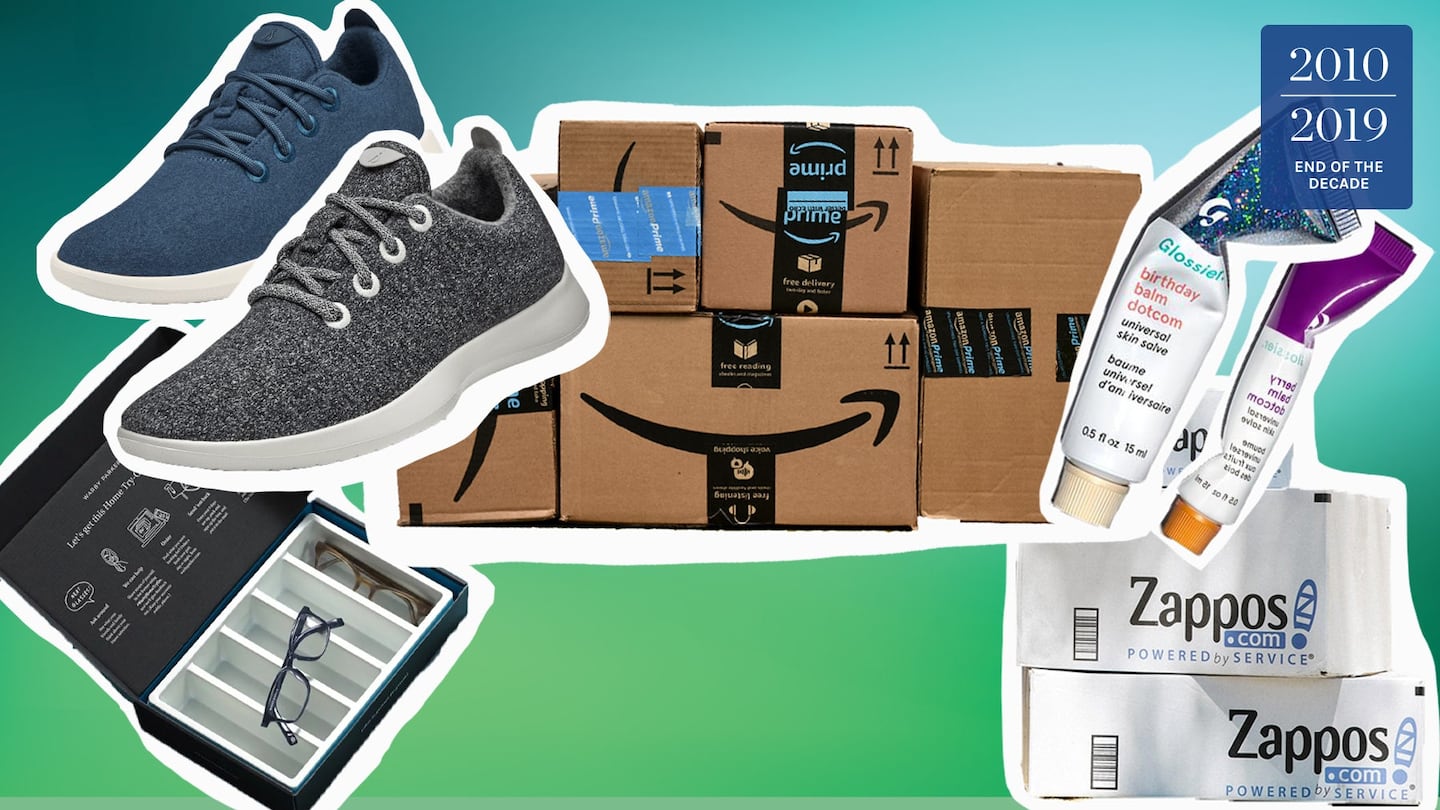
The Business of Fashion
Agenda-setting intelligence, analysis and advice for the global fashion community.

Agenda-setting intelligence, analysis and advice for the global fashion community.

As the 2010s come to a close, BoF reflects on how the past decade transformed the fashion industry — and the culture at large. Explore our insights here.
NEW YORK, United States — When Warby Parker began selling eyewear online at sub-Lenscrafter prices in 2010, it ignited a revolution.
<strong>It was a moment when Zappos was proving you could buy shoes online, and Blue Nile proved you could sell engagement rings online.</strong>
Early direct-to-consumer brands told consumers they kept prices low by cutting out the "middleman" — marketing code for department stores. The reality was more complicated; bypassing wholesalers was part of it, but so was tolerating years of losses (though some, including Warby Parker, now operate in the black). Selling online, instead of via hundreds of stores, also kept costs down. A company like Everlane, which launched in 2011, said it could charge less for its elevated basics without physical retail outposts to maintain. Warby Parker nabbed better margins on its hipster eyewear by not relying on wholesalers.
"We got to know customers really well in aggregate, and could get data," said Warby Parker Co-Founder Jeff Raider, who later started Harry's, a men's grooming brand acquired by Edgewell for $1.37 billion in May.
ADVERTISEMENT
In some cases, the products from these start-ups weren't all that different from those of the brands they were disrupting. But a key difference was messaging.
How They Did It
DTC brands identified consumer pain points and spun stories about how they, and only they, could solve them. Whether these stories were true was of secondary importance. Allbirds' shoes were supposed to be more comfortable — and sustainable — than Nike's. Glossier's natural-looking makeup was cooler and more virtuous than MAC Cosmetics'. Away's luggage could take you on an adventure. Young, hip guys could connect with Harry's in a way they never would with a drug-store brand.
The rise of social media and the ubiquity of smartphones also helped spread the word. Raising millions of dollars in funding to pay for social media advertising became the norm. The strategy was an effective way to score huge numbers of customers for previously unknown brands, particularly in the first half of the decade, before Instagram and Facebook were flooded with ads from lookalike fashion start-ups.
<strong>The storytelling was aspirational. It was about an experience, a lifestyle.</strong>
"Mall brands were predicated on distribution advantage; on more doors and better merchandising," said Jesse Derris, head of the PR agency that helped grow brands like Warby Parker, Everlane and Glossier. "It was a merchandise-driven business that believed choosing colours and trends was the leading strategy, and brand speak was secondary."
Lacklustre stores, combined with a pedestrian product assortment, became a liability as retail foot traffic declined in the wake of Amazon's rise. By 2017, Amazon's North America revenue hit $106 billion, up from $18 billion in 2010. Amazon's Prime membership was training subscribers to place endless orders without ever having to leave their couch. In 2018, empty shops inside malls across the US hit a seven-year-high, at 9 percent, according to The Wall Street Journal.
<span>With social media, consumers knew more about Warby Parker in 10 minutes then they did about the Gap.</span>
Legacy Retail’s Difficult Pivot
<span>Direct to consumer brands were mobile-first and built around data and analytics whereas traditional brands were less agile.</span>
Meanwhile, Amazon constantly upped the stakes by expanding its warehouse network. Free shipping and returns became standard in digital shopping too and the heavy costs hit brands hard.
ADVERTISEMENT
DTC Goes Offline
<strong>The success of Walmart, Target and Nordstrom is because of the investments they made in playing in omnichannel.</strong>
Even Amazon has opened stores. It believes foot traffic will lead to more online sales. (It is also eager to collect in-store shopping data.)
But just like many of their now-shuttered predecessors, not all digital brands are going to survive. "Ninety-five percent are going to fail," Derris predicted — and a DTC reckoning is already happening. Many brands that have raised millions of dollars in order to help guarantee they are part of the 5 percent are now experimenting with everything from experiential retail to inventory-less stores.
Related Articles:
[ The Direct-to-Consumer ReckoningOpens in new window ]
[ What's the Point of Outlet Malls in 2020?Opens in new window ]
[ Battling the Retail Apocalypse: What Worked and What Didn'tOpens in new window ]
As the German sportswear giant taps surging demand for its Samba and Gazelle sneakers, it’s also taking steps to spread its bets ahead of peak interest.
A profitable, multi-trillion dollar fashion industry populated with brands that generate minimal economic and environmental waste is within our reach, argues Lawrence Lenihan.
RFID technology has made self-checkout far more efficient than traditional scanning kiosks at retailers like Zara and Uniqlo, but the industry at large hesitates to fully embrace the innovation over concerns of theft and customer engagement.
The company has continued to struggle with growing “at scale” and issued a warning in February that revenue may not start increasing again until the fourth quarter.